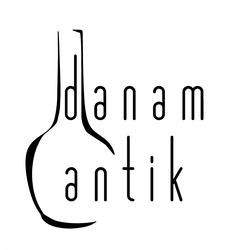Description
Antique Royal Copenhagen Flora Danica Set for 12 persons 72 pieces.
12 x 3549 Dinner Plates 25cm / 9 4/5"
12 x 3546 Soup plates 22cm / 8 41/64"
12 x 3573 Salad Plates 19,5cm / 7 2/3"
12 x 3552 Side Plates 14,3cm / 5 5/8".
12 x 3513 Chocolade Cups / Coffee Cups H cup: 6.5 cm (2.55 in). Diam saucer: 14 cm (5.51 in)
All piece made in 1935, 1936 and 1937.
All items are in perfect condition.
Latin names:
3552:
Sedum anglicum Huds.
Teesdalia nudicaulis R. Br.
Saxifraga controversa Sterne
Stellaria hmifusa Rottb.
Phyllardoce coerulea Gren & Godr.
Solanum Dulcamanra L.
Jasione montana L.
Saxifraga decipiens Ehrb. beta cæspitosa
Vaccinium pubescens Wormskj.
Viola umbrosa Fr.
Matricaria Chamomilla L.
Lactuca muralis Fresen
3573
Pedicularis hirsuta L.
Campanula rotundifolia var. uniflora L
Artemisia norvegica Fr.
Veronica alpina carymbosa Horn.
Potentilla nivea L
Carduus crispus L.
Sedum boloniense Lois.
Vaccinium vitis idæa L.
Saxifraga controversa Sterne
Phyllodoce coerulea Gr. & Godr.
Sedum villosum L.
Heleosciadium repens Koch.
3513
Saxifraga var. oxypetala eng.
Loiseleuria procumbens Desr.
Pingvicula alpina L.
Oxycoccus palustris
Veronica præcox All.
Anagallis arvensis L.
Saxifraga aizoides L.
Heracium auriculaefarme Fr.
3549
Rosa Pimpinellaefolia L.
Corydalis fabacea Pers.
Leontadon nigro - lnatus Fr.
Anagallis coerulea Schreb.
Gagea arvensis Schult.
Myrrlis odorata Scop.
Crambe maritima L.
Anemone varnalis Mull.
Rhinanthus minor Ehrb.
Galeopsis achrolenca Lauv.
Orchis Sambucinus L. alfa incarnatus
Atropa Belladonna L.
3546
Oxalis Acetosella Beta lilacina
Potentilla opaca L.
Vinca minor L
Papaver nudicaule L.
Oxalis Acetosella L.
Potentilla nivea L.
Viola biflora
Astragalus danicus Retz.
12 x 3549 Dinner Plates 25cm / 9 4/5"
12 x 3546 Soup plates 22cm / 8 41/64"
12 x 3573 Salad Plates 19,5cm / 7 2/3"
12 x 3552 Side Plates 14,3cm / 5 5/8".
12 x 3513 Chocolade Cups / Coffee Cups H cup: 6.5 cm (2.55 in). Diam saucer: 14 cm (5.51 in)
All piece made in 1935, 1936 and 1937.
All items are in perfect condition.
Latin names:
3552:
Sedum anglicum Huds.
Teesdalia nudicaulis R. Br.
Saxifraga controversa Sterne
Stellaria hmifusa Rottb.
Phyllardoce coerulea Gren & Godr.
Solanum Dulcamanra L.
Jasione montana L.
Saxifraga decipiens Ehrb. beta cæspitosa
Vaccinium pubescens Wormskj.
Viola umbrosa Fr.
Matricaria Chamomilla L.
Lactuca muralis Fresen
3573
Pedicularis hirsuta L.
Campanula rotundifolia var. uniflora L
Artemisia norvegica Fr.
Veronica alpina carymbosa Horn.
Potentilla nivea L
Carduus crispus L.
Sedum boloniense Lois.
Vaccinium vitis idæa L.
Saxifraga controversa Sterne
Phyllodoce coerulea Gr. & Godr.
Sedum villosum L.
Heleosciadium repens Koch.
3513
Saxifraga var. oxypetala eng.
Loiseleuria procumbens Desr.
Pingvicula alpina L.
Oxycoccus palustris
Veronica præcox All.
Anagallis arvensis L.
Saxifraga aizoides L.
Heracium auriculaefarme Fr.
3549
Rosa Pimpinellaefolia L.
Corydalis fabacea Pers.
Leontadon nigro - lnatus Fr.
Anagallis coerulea Schreb.
Gagea arvensis Schult.
Myrrlis odorata Scop.
Crambe maritima L.
Anemone varnalis Mull.
Rhinanthus minor Ehrb.
Galeopsis achrolenca Lauv.
Orchis Sambucinus L. alfa incarnatus
Atropa Belladonna L.
3546
Oxalis Acetosella Beta lilacina
Potentilla opaca L.
Vinca minor L
Papaver nudicaule L.
Oxalis Acetosella L.
Potentilla nivea L.
Viola biflora
Astragalus danicus Retz.
Payment & Security
Your payment information is processed securely. We do not store credit card details nor have access to your credit card information.






























































































































































































































































